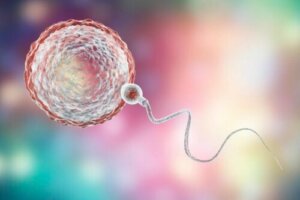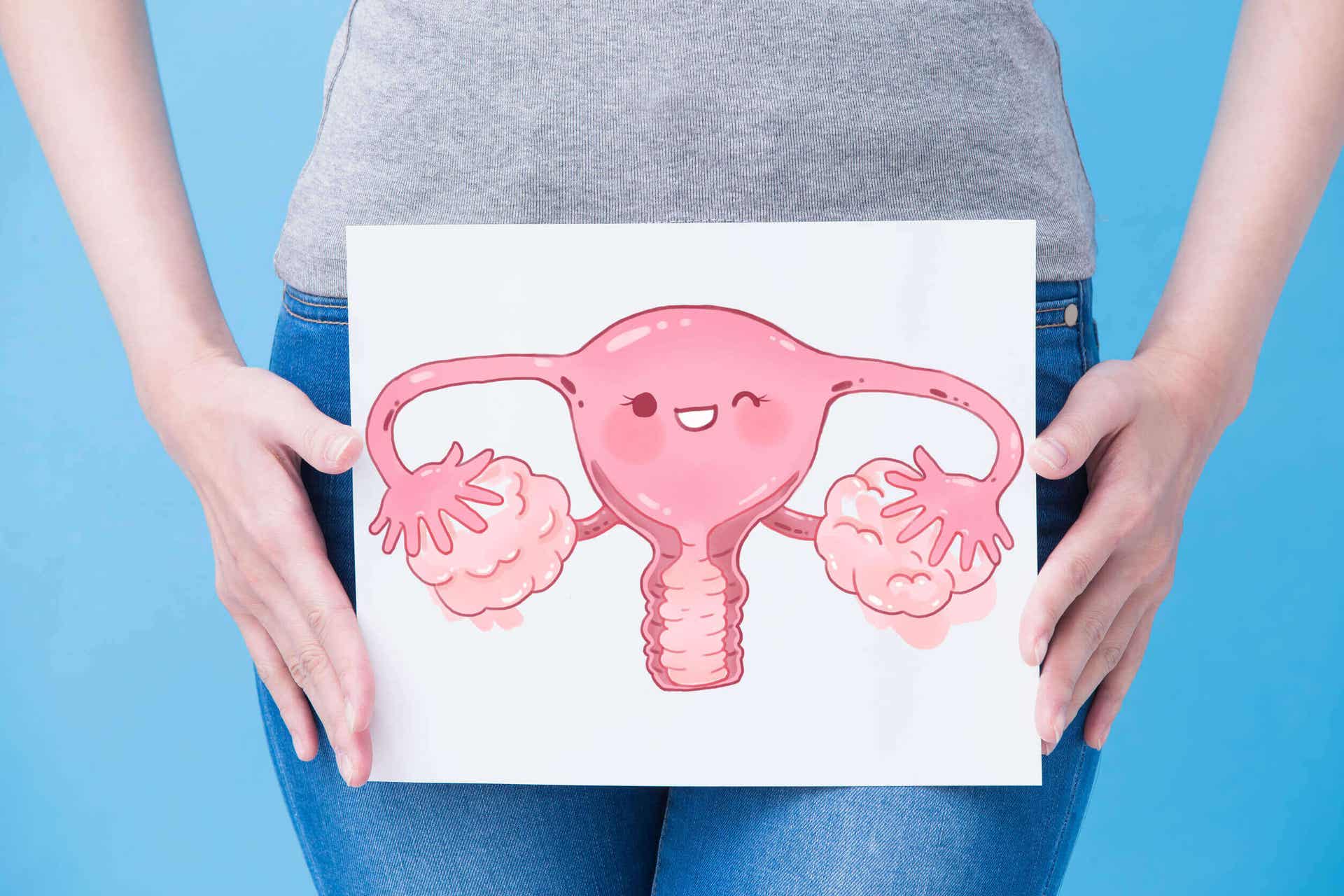4 Interesting Facts About Ovules

It’s difficult not to talk about women and their fertility without referring to their eggs. These cells are complex and very interesting, which is why they’re often the daily subject of scientific research. When combined with sperm, they give rise to the structures that will engender the future baby, and the unknown details in their structure and function make them all the more striking. Today, we’ll share four interesting facts about ovules.
What are eggs?
Eggs are the female sex cells (or gametes), vital to the reproductive process. When they come into contact with the man’s sperm, the result is a structure called a zygote, which will give rise to the future baby.
About every 28 days, the process of ovulation occurs. In this process, structures called follicles – inside the ovaries – develop to release cells called oocytes. As the hours pass, they develop into eggs as they travel through the uterine tubes.
This whole complex process is a consequence of hormonal changes that occur every month. Important here is the correct functioning of the hypothalamus-pituitary-ovary axis, which releases important substances capable of making changes in the female reproductive system.
4 interesting facts about ovules
As you may have noticed, eggs are exceptional cells. Nowadays, we know a great deal about them. But, every now and then, scientists discover amazing things about how they work. Here are some of the most interesting facts about ovules.
1. Egg development begins even before birth

When a baby girl is born, she has hundreds of thousands of follicles in her ovaries, called primordial follicles. Since there aren’t many hormonal signals to activate them, many of them remain dormant or gradually begin to die.
Once the girl develops, hormonal changes take over. The follicles become active and begin to give rise to eggs (through ovulation). However, in the years between birth and puberty, the vast majority of follicles cease to be useful. The latter explains the low reproductive age of women when compared to men.
Find out more: Diet and Polycystic Ovary Syndrome
2. Eggs are much larger than sperm cells
That’s right! The average size of a sperm is about 0.05 millimeters, while an egg reaches between 0.15 and 0.17 millimeters. Impressive, isn’t it? This has nothing to do with the number of genes in either cell, as both should have the same number, i.e. half the genes of any other cell in the human organism.
This may be related to the dynamics that each one has during fertilization. The sperm must travel through the vagina and inside the uterus to find the eggs, a task that is facilitated by their particular structure and size.
3. Ovulation doesn’t always occur on the same side
Each time a menstrual cycle occurs, only one egg is released. Women have two ovaries (one on each side) and thousands of active follicles that could give rise to eggs. It can be a bit complicated to understand how the body coordinates so that only one of these follicles functions every 28 days.

This process is so precise that ovulation often occurs alternately in some women. That is, one month it occurs on one side and the next month it changes. It’s likely that this happens in order to maintain fertility in case one of the two ovaries is permanently damaged.
4. There can be menstruation without ovulation
From a medical point of view, this is known as an “anovulatory menstrual cycle” and is a common cause of infertility. But what can be the reasons for a woman not releasing eggs properly?
In most cases, it’s a result of hormonal problems. Polycystic ovarian syndrome is one example and, from a clinical point of view, these patients tend to be overweight, have acne, facial hair, and irregular menstruation.
Find out more: Irregular Menstrual Cycles: Causes, Signs and Treatment
Special and very interesting cells
Egg cells are fascinating and very particular, just like sperm cells. In both health and disease, they stand out for their unique characteristics, which can’t be found in almost any other cell in the body. Therefore, taking care of their health through frequent gynecological checkups is recommended.
It’s difficult not to talk about women and their fertility without referring to their eggs. These cells are complex and very interesting, which is why they’re often the daily subject of scientific research. When combined with sperm, they give rise to the structures that will engender the future baby, and the unknown details in their structure and function make them all the more striking. Today, we’ll share four interesting facts about ovules.
What are eggs?
Eggs are the female sex cells (or gametes), vital to the reproductive process. When they come into contact with the man’s sperm, the result is a structure called a zygote, which will give rise to the future baby.
About every 28 days, the process of ovulation occurs. In this process, structures called follicles – inside the ovaries – develop to release cells called oocytes. As the hours pass, they develop into eggs as they travel through the uterine tubes.
This whole complex process is a consequence of hormonal changes that occur every month. Important here is the correct functioning of the hypothalamus-pituitary-ovary axis, which releases important substances capable of making changes in the female reproductive system.
4 interesting facts about ovules
As you may have noticed, eggs are exceptional cells. Nowadays, we know a great deal about them. But, every now and then, scientists discover amazing things about how they work. Here are some of the most interesting facts about ovules.
1. Egg development begins even before birth

When a baby girl is born, she has hundreds of thousands of follicles in her ovaries, called primordial follicles. Since there aren’t many hormonal signals to activate them, many of them remain dormant or gradually begin to die.
Once the girl develops, hormonal changes take over. The follicles become active and begin to give rise to eggs (through ovulation). However, in the years between birth and puberty, the vast majority of follicles cease to be useful. The latter explains the low reproductive age of women when compared to men.
Find out more: Diet and Polycystic Ovary Syndrome
2. Eggs are much larger than sperm cells
That’s right! The average size of a sperm is about 0.05 millimeters, while an egg reaches between 0.15 and 0.17 millimeters. Impressive, isn’t it? This has nothing to do with the number of genes in either cell, as both should have the same number, i.e. half the genes of any other cell in the human organism.
This may be related to the dynamics that each one has during fertilization. The sperm must travel through the vagina and inside the uterus to find the eggs, a task that is facilitated by their particular structure and size.
3. Ovulation doesn’t always occur on the same side
Each time a menstrual cycle occurs, only one egg is released. Women have two ovaries (one on each side) and thousands of active follicles that could give rise to eggs. It can be a bit complicated to understand how the body coordinates so that only one of these follicles functions every 28 days.

This process is so precise that ovulation often occurs alternately in some women. That is, one month it occurs on one side and the next month it changes. It’s likely that this happens in order to maintain fertility in case one of the two ovaries is permanently damaged.
4. There can be menstruation without ovulation
From a medical point of view, this is known as an “anovulatory menstrual cycle” and is a common cause of infertility. But what can be the reasons for a woman not releasing eggs properly?
In most cases, it’s a result of hormonal problems. Polycystic ovarian syndrome is one example and, from a clinical point of view, these patients tend to be overweight, have acne, facial hair, and irregular menstruation.
Find out more: Irregular Menstrual Cycles: Causes, Signs and Treatment
Special and very interesting cells
Egg cells are fascinating and very particular, just like sperm cells. In both health and disease, they stand out for their unique characteristics, which can’t be found in almost any other cell in the body. Therefore, taking care of their health through frequent gynecological checkups is recommended.
All cited sources were thoroughly reviewed by our team to ensure their quality, reliability, currency, and validity. The bibliography of this article was considered reliable and of academic or scientific accuracy.
- Murcia-Lora J, et al. La ventana de la fertilidad y marcadores biológicos: revisión y análisis en ciclos ovulatorios normales. Pers Bioet 2011;15(2):149-165.
- Velásquez G. Fisiología de la reproducción humana. Revista Mexicana de Medicina de la Reproducción 2009;1(4):115-30.
This text is provided for informational purposes only and does not replace consultation with a professional. If in doubt, consult your specialist.








